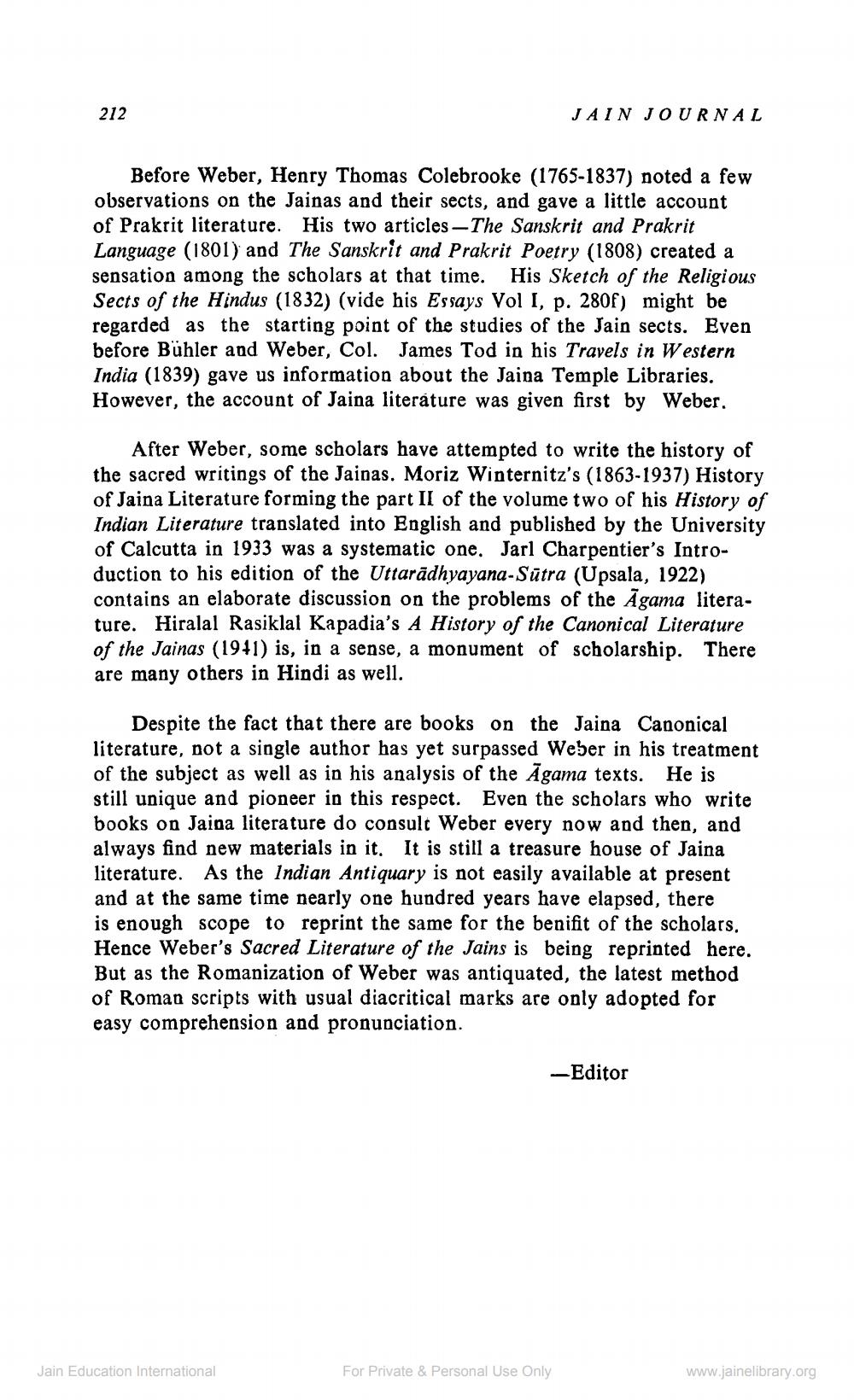________________
212
JAIN JOURNAL
Before Weber, Henry Thomas Colebrooke (1765-1837) noted a few observations on the Jainas and their sects, and gave a little account of Prakrit literature. His two articles - The Sanskrit and Prakrit Language (1801) and The Sanskrit and Prakrit Poetry (1808) created a sensation among the scholars at that time. His Sketch of the Religious Sects of the Hindus (1832) (vide his Essays Vol I, p. 280f) might be regarded as the starting point of the studies of the Jain sects. Even before Bühler and Weber, Col. James Tod in his Travels in Western India (1839) gave us information about the Jaina Temple Libraries. However, the account of Jaina literature was given first by Weber.
After Weber, some scholars have attempted to write the history of the sacred writings of the Jainas. Moriz Winternitz's (1863-1937) History of Jaina Literature forming the part II of the volume two of his History of Indian Literature translated into English and published by the University of Calcutta in 1933 was a systematic one. Jarl Charpentier's Introduction to his edition of the Uttarādhyayana-Sūtra (Upsala, 1922) contains an elaborate discussion on the problems of the Agama literature. Hiralal Rasiklal Kapadia's A History of the Canonical Literature of the Jainas (1971) is, in a sense, a monument of scholarship. There are many others in Hindi as well.
Despite the fact that there are books on the Jaina Canonical literature, not a single author has yet surpassed Weber in his treatment of the subject as well as in his analysis of the Agama texts. He is still unique and pioneer in this respect. Even the scholars who write books on Jaina literature do consult Weber every now and then, and always find new materials in it. It is still a treasure house of Jaina literature. As the Indian Antiquary is not easily available at present and at the same time nearly one hundred years have elapsed, there is enough scope to reprint the same for the benifit of the scholars, Hence Weber's Sacred Literature of the Jains is being reprinted here. But as the Romanization of Weber was antiquated, the latest method of Roman scripts with usual diacritical marks are only adopted for easy comprehension and pronunciation.
-Editor
Jain Education International
For Private & Personal Use Only
www.jainelibrary.org




